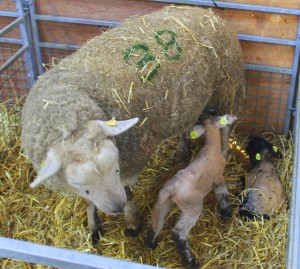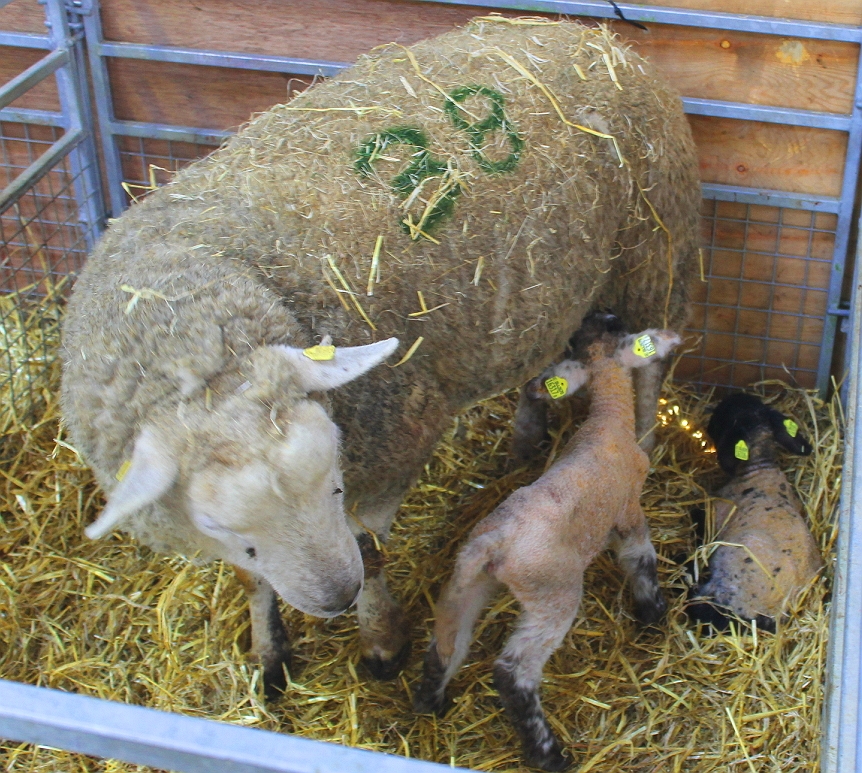As the closing date for submitting lambing information approaches (APRIL 30th) many breeders are recording their lambing data with Sheep Ireland. Sheep Ireland is constantly monitoring the data that comes in to ensure all the data looks satisfactory an eliminating any problems that could arise later in the year for the breeder. As always we recommend that breeders contact us here if they are ever unsure as to what and when they should be recording data. You can also get more information in our LambPlus Guide which was sent to every LambPlus breeder.
Record Every Lamb
It is important to record every lamb that is born in your pedigree flock regardless if you know that a particular lamb will never be sold on for breeding and will be going straight for slaughter.
Example 1: If a ewe has a set of twins, one male and one female and the breeder knows the female will be sold for slaughter and does not record the lamb as a result, the ewe is only given credit for giving birth to a single.
Example 2: If a ewe has a single lamb and the breeder does not record the lamb then the database will assume that that ewe was barren for the year and therefore the ewes fertility will be penalised.
Record Dead Lambs
In order to identify what blood lines are producing the hardiest and most viable lambs at birth we must first identify which bloodlines are not as hardy and viable at birth. We currently do this by recording lambs that are dead at birth (or die in the 24 hour period post lambing). Any lamb that dies after 24 hours should be recorded alive at birth and the record the death date on the inventory (Web recorders) or on the lambing or weighing sheets (Paper recorders). The percentage of dead lambs in every flock is being monitored, and if the threshold is not met then the lambing information from that flock unfortunately must be disregarded from the evaluation. For lambs that are recorded as dead at birth a lamb ID (pedigree ID or NSIS) is not required and the ID can simply be recorded as “UNKNOWN”.
Lambing Difficulties
It is critical to the genetic evaluations that there is some variation in the level of lambing assistance each ewe in the flock receives. Again this is also being monitored for variation because if there is no variation recorded the the evaluation can not tell which bloodlines are the easiest to lamb. The scores rang from 1 – 4. See below for explanation.
| Lambing Score | Explanation |
|---|---|
| 1 – Unassisted | Ewe lambed down without any shepherd intervention |
| 2 – Voluntary Assistance | Lamb was presenting correctly and would have without doubt lambed down successfully without increasing the chance of lamb mortality |
| 3 – Slight Assistance | Ewe required slight assistance at lambing as there was an increased probability of a dead lamb(s) if no assistance was given. Example: head back, leg(s) back, breech. |
| 4 – Significant Assist | Ewe required significant assistant at lambing as there was a very high probability of a dead lamb(s). Example: C-Section, head back, leg (s) back, breech |
Rearing Rank
This refers to Bottle fed, Fostered lambs and Embryo Transfer (ET) lambs.
This can be recorded on the lambing sheets (Paper recorders) or on the rearing page on the web-site. We would advise breeders with ET lambs to contact us as these can be difficult to record for first time users.


